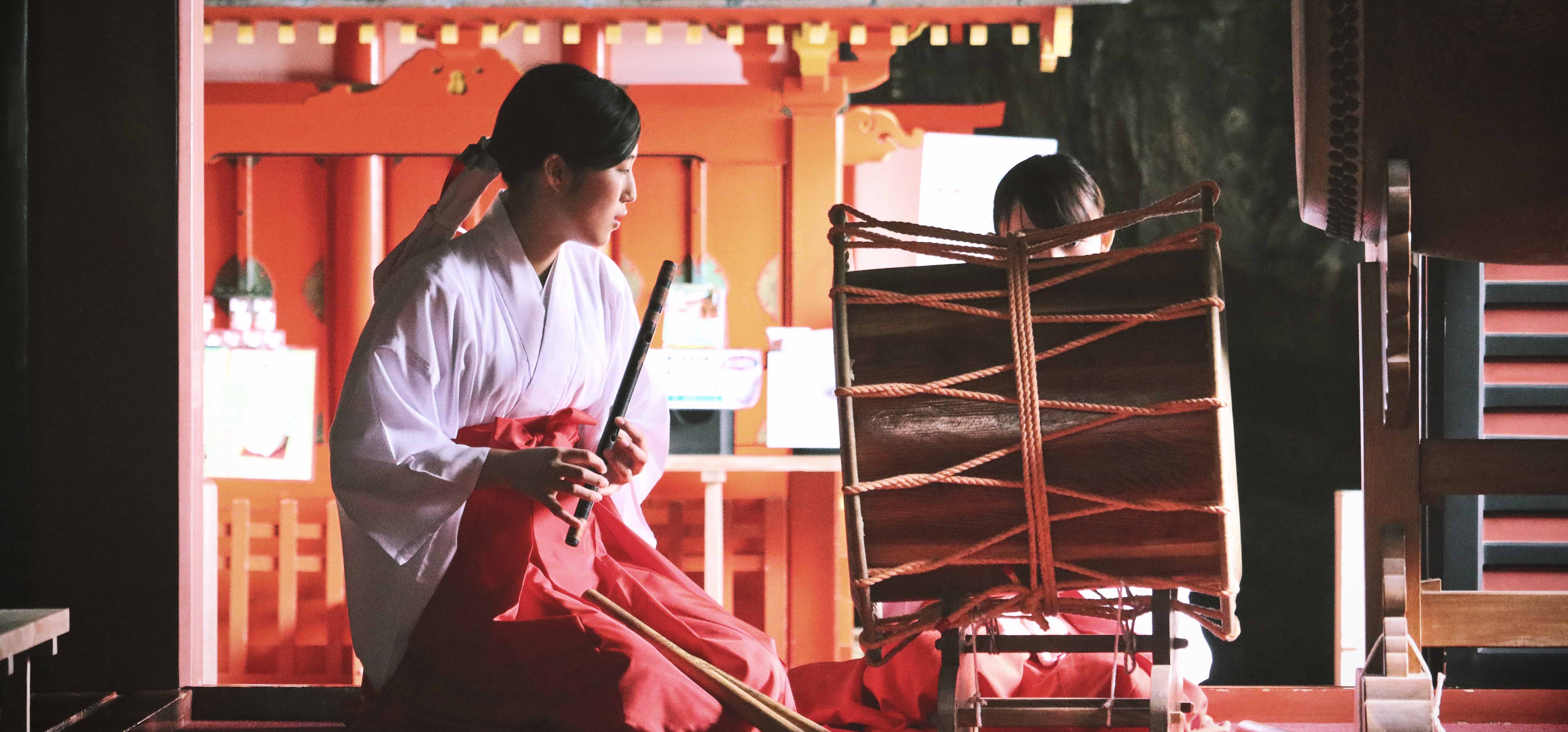A Short History of Taiko Drumming in Japanese Culture
Taiko drumming is known as ‘the heartbeat of Japan.’ An ancient art form that evolved from a single sacred beat to the spectacular ensemble performances we see today, Taiko is a powerful part of Japanese culture. Let’s take a look at the intricate and fascinating history of taiko drumming in Japanese culture.
Taiko drumming’s deep roots in Japanese culture
The Japanese word taiko means simply ‘drum’ in English, signaling how deep taiko’s roots go in Japanese culture. Over the years, taiko has taken on extra meaning and now also refers to various Japanese drums known collectively as wadaiko, or to an ensemble drum performance.
It’s difficult to trace the origins of taiko, and there are many different opinions on how taiko came to existence in Japan. We are looking at a few sources that provide information about the different views on this art form. Humans have been banging on drums for thousands of years and percussion instruments are usually the earliest musical remnants of ancient civilizations. The earliest drums ever found in the history of Japan date back to the Jōmon period (ca. 10,000 BC–300 BC). These drums are thought to have found their way to Japan from continental Asia. They may have originated as far away as India and reached Japan around the 5th century when the first wave of Chinese immigrants brought their diverse culture to the island nation.
Early Japanese taiko is thought to have been used for a variety of purposes. Taiko had a sacred role in the rituals and festivals of the Buddhist and Shinto religions, was played in the earliest Imperial Courts, and was a key feature of the burgeoning Japanese theater. In a military setting, taiko was used to rally troops and communicate with allies across wide distances. Japanese soldiers marched to the beat of the taiko.

The art of Kumi-Daiko
Remarkably, taiko drumming was not performed as an ensemble until 1951 when kumi-daiko was invented. This revolutionary new performance style was introduced by jazz drummer Daihachi Oguchi. Oguchi saw the potential of playing multiple types of drum at once when he was asked to interpret an old piece of taiko music. Studying ancient music notation, a forgotten art in Japanese culture, Oguchi wondered why there had been so little taiko experimentation.
The taiko instruments themselves hold significant value in Japanese culture. The nagadō-daiko (long-bodied drum) is considered the taiko standard and is played alongside the shime-daiko (high-pitched drum) and the ōdaikō (bass drum). Today’s instruments vary in size from a pan-sized snare drum to a bass drum as large as a washing machine, though the most common is around the size of a wine barrel. Traditionally, each instrument is carved from the trunk of a Japanese keyaki tree. The wood is carved into a hollow cylinder, the top of which is covered with a piece of quality cow-hide and pinned in place with metal studs.
Taiko instruments are beautiful but really come to life when played. The real magic of kumi-daiko is felt when performers come together to play their instruments in unison. Oguchi’s first taiko ensemble, Osuwa Daiko, was made up of amateurs who could play only simple rhythms. But over time, Oguchi and his contemporaries elevated taiko to a fine art, taking the forgotten music into concert halls. Famously, Oguchi starred in a historic taiko performance at the closing of a world famous sports event in 1998 in Nagano. Oguchi once put the special art into words: “Your heart is a taiko. All people listen to a taiko rhythm dontsuku-dontsuku in their mother’s womb. It’s instinct to be drawn to taiko drumming.”
Taking taiko drumming Stateside
Building on Osuaw Daiko’s popularity, a second group, Odeo Sukeroku Daiko emerged. Odeo Sukeroku Daiko brought an element of style, integrating complex choreography and more advanced musical ability than their predecessors. Then, in 1969, Ondekoza hit the Japanese culture scene. This group was formed on Sado Island and was the brainchild of Tagayasu Den who trained his Ondekoza disciples in a similar way a Buddhist monk would train novices. Ondekoza members followed a rigorous training regime, ultra-healthy lifestyle, and lived communally. This intense group hit the headlines in the US in 1975 when they ran the Boston marathon immediately before putting on an incredible Taiko show.
It wasn’t long before kumi-daiko drumming became popular in the US. Japanese immigrants and students starting new lives in the US in the 60s brought their distinctive Japanese culture with them. The first American taiko group was formed in 1968 in San Francisco. In 1969, Kinnara Taiko formed at the Senshin Buddhist temple in Los Angeles and San Jose Taiko got its start in 1973. San Jose Taiko got to work, promoting their taiko as a Japanese-American art form. Today there are an estimated 300 taiko groups practicing the unique culture and history of Japan that perform in the US.
Taiko drumming in today’s Japanese Culture
Fast forward to the present and taiko drumming is perhaps more popular than ever. All around the world spectacular ensemble drum performances are being held. Far from merely drumming, the sky is the limit with how creative and acrobatic these shows can get. On top of that, many performances are infused with stunning audiovisual effects, making it a true sight to behold. Taiko performances are just one of the many ways in which JCD can arrange for the finest Japanese entertainment for your event. For any questions, feel free to contact us here!
